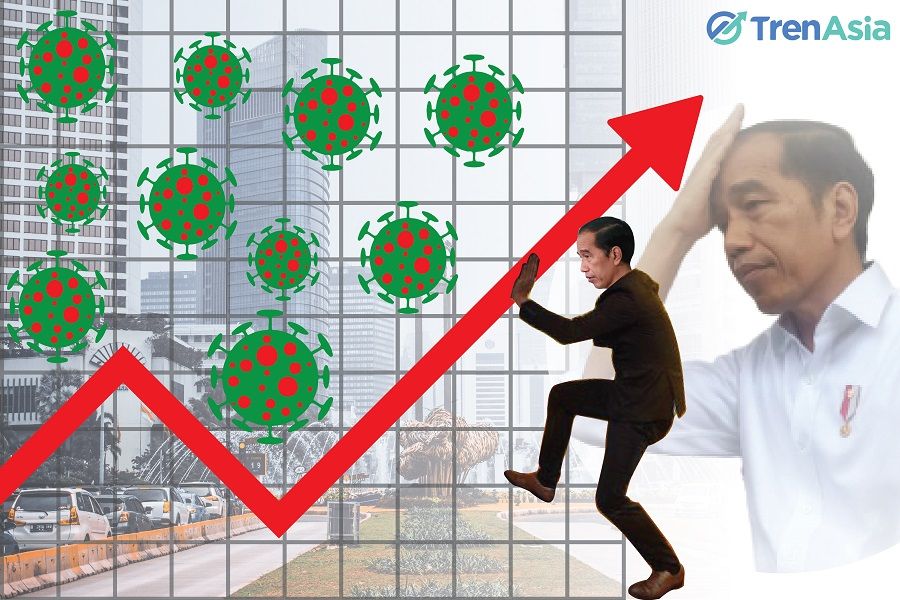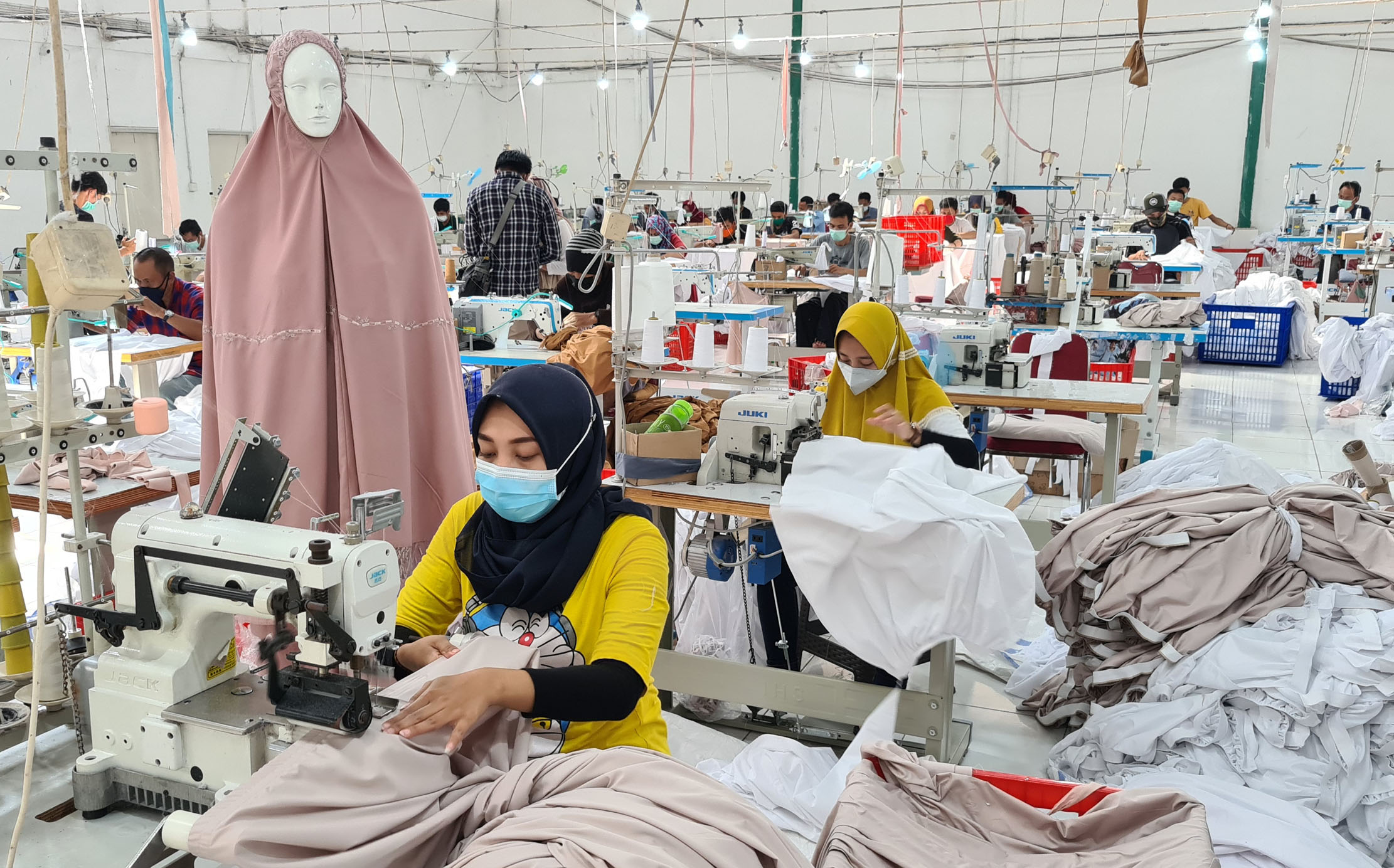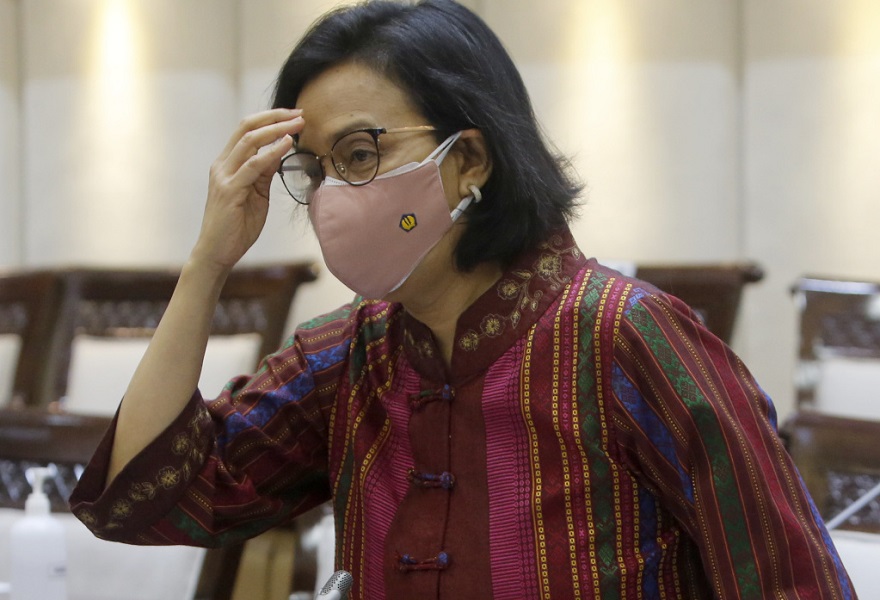
Hampering Corona Volume Two (Serial 3): Perplexity of Lockdown, Economic Growth, and Swelling Debt
JAKARTA – The look on the face of the Coordinating Minister for the Economy Airlangga Hartarto was happy when he conveyed the COVID-19 case which had been suppressed to below 10,000 cases per day in early June 2021. Despite being reminded that there are potential cases of COVID-19 due to the Eid holiday, Airlangga still […]
Industri
JAKARTA – The look on the face of the Coordinating Minister for the Economy Airlangga Hartarto was happy when he conveyed the COVID-19 case which had been suppressed to below 10,000 cases per day in early June 2021.
Despite being reminded that there are potential cases of COVID-19 due to the Eid holiday, Airlangga still boasted of selling out the promise of 7.3%-8.3% year on year (yoy) economic growth in the second quarter of 2021.
“Daily cases are under control and active cases are relatively well maintained. The government believes that in the second quarter of 2021 our economy can grow in the range of 7-8%,” convinced Airlangga at a press conference, Monday, June 7, 2021.
- Modernland Realty Raup Marketing Sales Rp341 Miliar pada Kuartal I-2021
- Waskita Karya Raih Kontrak Pembangunan Jalan Perbatasan RI-Malaysia Rp225 Miliar
- Pengelola Hypermart (MPPA) Berpotensi Meraih Rp670,85 Miliar Lewat Private Placement
- Gandeng Visa Indonesia, MNC Bank Luncurkan MotionVisa
- Pemkot Tangerang Buka Posko Pengisian Oksigen Medis
The promise of economic growth was again sold by President Joko Widodo (Jokowi). The cadre of the Indonesian Democratic Party of Struggle (PDI-P) tried to calm the public with the narrative that the controlled COVID-19 case allowed the economy to grow by 7%-8%.
It wasn’t until two weeks later that the promises they had sold out lasted. The reason is that Indonesia has experienced an explosion of cases of COVID-19, the Delta variant from India. The economy that is being stimulated, like it or not, has to be put on hold by the government to ease the spike in COVID-19 cases.
The implementation of Micro Community Activity Restrictions (PPKM) has also been tightened. The government pulled the emergency brake by closing malls, restaurants, and a 100% work from home (WFH) policy in Java-Bali.
Unemployment Threat

Pekerja menyelesaikan pembuatan mukena di Pabrik Mukena Siti Khadijah, Cinere, Depok , Kamis 15 April 2021. Foto : Panji Asmoro/TrenAsia
Research Director of the Center of Reform on Economic (CORE) Indonesia, Piter Abdullah, assesses that the COVID-19 condition which has soared again has buried the government’s dream of delivering 7%-8% economic growth in the second quarter of 2021.
“Without a spike in COVID-19 cases, I’m sure it won’t reach the target (7-8 percent), especially when there’s a second wave like now. The impact is that now the business world’s space for movement is increasingly limited with a strict Micro PPKM,” said Piter to TrenAsia.com, Tuesday, June 29 2021.
Piter assesses that many government policy interventions in spurring the economy have been in vain due to not taking care of the COVID-19 condition. He is worried that the upward trend in Manufacturing Purchase Managers’ Index (PMI) must stop in June 2021 due to the surge in COVID-19 cases.
- Modernland Realty Raup Marketing Sales Rp341 Miliar pada Kuartal I-2021
- Waskita Karya Raih Kontrak Pembangunan Jalan Perbatasan RI-Malaysia Rp225 Miliar
- Pengelola Hypermart (MPPA) Berpotensi Meraih Rp670,85 Miliar Lewat Private Placement
- Gandeng Visa Indonesia, MNC Bank Luncurkan MotionVisa
- Pemkot Tangerang Buka Posko Pengisian Oksigen Medis
As is known, Indonesia has recorded an increase in PMI since March 2021. According to IHS Markit data, Indonesia’s Manufacturing PMI has crept up from 50.9 in February, 53.2 in March 2021, 54.6 in April, and 55.3 in May 2021.
The decline in the Manufacturing PMI due to the second wave of COVID-19 has a multiplier effect on the Indonesian economy. First, the slowdown in the Manufacturing PMI led to a correction in Indonesia’s export-import performance.
Then, Piter indicated that there will be an explosion in the unemployment rate if the Indonesian Manufacturing PMI does not recover in the near future. The reason is that the manufacturing industry has the ability to absorb high labor.
In the period before the COVID-19 pandemic, the manufacturing industry absorbed 18.93 million people or 14.96% of the total national workforce in August 2019. At that time, Indonesia’s Manufacturing PMI was at 49.0.
The absorption then fell to 17.48 million people or 13.6% in August 2020. Thus, 1.45 million people lost their jobs in the manufacturing industry due to the COVID-19 pandemic.
This shows that manufacturing PMI performance has a close relationship with labor absorption in Indonesia. Piter said that the Indonesian Manufacturing PMI was threatened with parking below 50 in June 2021 if COVID-19 cases are still high.
“If PPKM comes to an emergency like now, PMI is believed to be below 50. At that time the company will calculate productivity, if it is not productive, it can choose to close and lay off employees,” said Piter.
In fact, Indonesia has not been able to return the open unemployment rate (TPT) to its pre-pandemic period. The unemployment rate in Indonesia in February 2021 reached 6.26% of the total workforce or higher than the same period in the previous year of 4.94%.
Not only that, Piter said that the slow economic recovery could also worsen labor conditions in Indonesia. The level of income received by workers can decrease as a result of the limited space for the company.
A study entitled The Short- and Long-Term Career Effects of Graduating in a Recession published in the American Economic Journal in 2012 found that the level of labor income during a recession, as experienced by Indonesia today, was much lower than normal conditions. The level of income received by workers in this recession also has a lasting effect for at least the next 10 years.
A number of these facts make Piter pessimistic that the Indonesian economy will rebound in the second quarter of 2021. According to CORE research, the economic growth of Indonesia in the second quarter of 2021 is estimated at only 3%-4% yoy or half of the government’s target.
What Are the Risks of Lockdown?

Suasana pengunjung dan tenant di pusat perbelanjaan Mal Kasablanka, Jakarta, Rabu, 23 Juni 2021. Foto: Ismail Pohan/TrenAsia
The option of total quarantine or lockdown emerged after the daily cases of COVID-19 continued to soar in recent times. This option is considered to be able to reduce the economic impact compared to implementing the existing Micro PPKM despite crippling the economy for two weeks.
Indonesia has the potential to lose Gross Domestic Product (GDP) of up to Rp463 trillion-Rp848 trillion if it chooses not to implement a lockdown when COVID-19 cases continue to soar. In the worst-case scenario, the Indonesian economy has the potential to contract by 0.5% yoy throughout 2021.
Director of the Center of Economic and Law Study (CELIOS), Bhima Yudhistira, said that Indonesia would experience greater economic losses if it did not immediately respond to the COVID-19 pandemic.
In his projection, Bhima said that the maximum economic growth that Indonesia could achieve if it did not implement a lockdown was only 2% yoy.
“Indonesia’s economy will grow more solidly when the lockdown is successful. This emergency condition must be handled with an emergency policy as well,” said Bhima when contacted separately, Tuesday, June 29, 2021.
- Modernland Realty Raup Marketing Sales Rp341 Miliar pada Kuartal I-2021
- Waskita Karya Raih Kontrak Pembangunan Jalan Perbatasan RI-Malaysia Rp225 Miliar
- Pengelola Hypermart (MPPA) Berpotensi Meraih Rp670,85 Miliar Lewat Private Placement
- Gandeng Visa Indonesia, MNC Bank Luncurkan MotionVisa
- Pemkot Tangerang Buka Posko Pengisian Oksigen Medis
However, this lockdown policy has cost as the consequences. According to Bhima, the costs required for the two-week lockdown policy reached Rp11 trillion to Rp25 trillion. This cost is equivalent to 6% of the infrastructure budget.
These costs cannot be avoided because the government is obliged to meet the daily needs of the community during the lockdown. This is stated in Law (UU) 6 of 2018 concerning National Quarantine
“Half measure of policy won’t do to deal with COVID-19,” said Bhima.
The effect of the lockdown, said Bhima, is also more sustainable on the Indonesian economy. If the lockdown is successful, Indonesia could experience an extraordinary rebound in the next quarter.
The rebound experienced, said Bhima, could directly reduce dependence on debt withdrawals. The reason is, the economy can run optimally if the COVID-19 case is under control.
The government can gradually reduce incentives to support the Indonesian economy. That way, Indonesia will no longer need to continuously attract debt during the COVID-19 pandemic.
Involved in Debt Interest Due to Pandemic Financing

Menteri Keuangan, Sri Mulyani saat hadir dalam rapat kerja dengan Komisi XI di kompleks Parlemen, Senayan, Jakarta, Senin, 15 Maret 2021. Foto: Ismail Pohan/TrenAsia
As is known, for this year alone, the Minister of Finance (Menkeu) Sri Mulyani Indrawati must spend Rp150 trillion for handling COVID-19. The funds do not include a number of government incentives in restoring the national economy. The total funds for the 2021 National Economic Recovery (PEN) are recorded at Rp699 trillion.
As a result, this year’s State Budget deficit is projected to reach Rp1,006,4 trillion or 5.7% of GDP. Sri Mulyani is frantically seeking funding sources through the issuance of Government Securities (SBN) to loans.
The Ministry of Finance (Kemenkeu) noted that Indonesia’s debt position was at Rp6,418 trillion as of May 2021. The debt experienced an increase of Rp1,159.58 trillion compared to May 2020.
Keep in mind, this figure does not include interest funds that need to be paid by the government. Bhima said that the aggressiveness of this withdrawal of funds has the potential to impose a debt legacy on the next generation.
- Modernland Realty Raup Marketing Sales Rp341 Miliar pada Kuartal I-2021
- Waskita Karya Raih Kontrak Pembangunan Jalan Perbatasan RI-Malaysia Rp225 Miliar
- Pengelola Hypermart (MPPA) Berpotensi Meraih Rp670,85 Miliar Lewat Private Placement
- Gandeng Visa Indonesia, MNC Bank Luncurkan MotionVisa
- Pemkot Tangerang Buka Posko Pengisian Oksigen Medis
Indonesia’s debt interest in 2022 is predicted to touch Rp417 trillion. This figure still has the potential to rise because the government could increase the yield on SBN to keep investors from running away.
Indonesia drew debt from the issuance of foreign currency SBN amounting to Rp1,126.45 trillion. Then, the foreign debt (ULN) drawn in foreign currency reached Rp828.51 trillion.
“We need to be careful because the burden of increasing debt spending needs to be watched out for because later the burden will be high on the APBN,” said Bhima.
Measuring Indonesia’s ability to pay debts can be seen from the debt service ratio (DSR) or debt-to-income ratio. DSR itself is the total burden of interest payments and principal instalments of debt in the form of foreign currency divided by state revenue.
According to Bhima, Indonesia’s DSR capability continues to decline. This was accompanied by the ability to attract receipts in the form of foreign exchange, which he assessed was also sluggish.
“Our DSR in 2015 was 25% and was reminded by the IMF (International Monetary Fund) and in 2020 it reached 54%. The problem with DSR is how the state encourages sectors related to foreign exchange receipts, this is increasingly out of sync,” said Bhima.
This debt crisis, said Bhima, was triggered by the high burden of COVID-19 financing. Therefore, Bhima urged the government to immediately mitigate the curve’s decline so that the aggressiveness of debt withdrawals can be reduced.
If this condition continues, Bhima said it is possible that Indonesia will enter a debt crisis. “The burden on our state budget is getting higher, the value of the rupiah is also threatened because of our foreign currency debt,” said Bhima. (SKO)
This article is a series of special reports that will be continued in the next issue entitled “Hampering Corona Volume Two.”
- Hampering Corona Volume Two (Serial 2): Disorganized Handling by Jokowi Amid the Pandemic
- Hampering Corona Volume Two (Serial 1): Delta Variant Attacks and Lessons from Other Countries
Writer: Muhamad Arfan Septiawan
Editor: Sukirno
